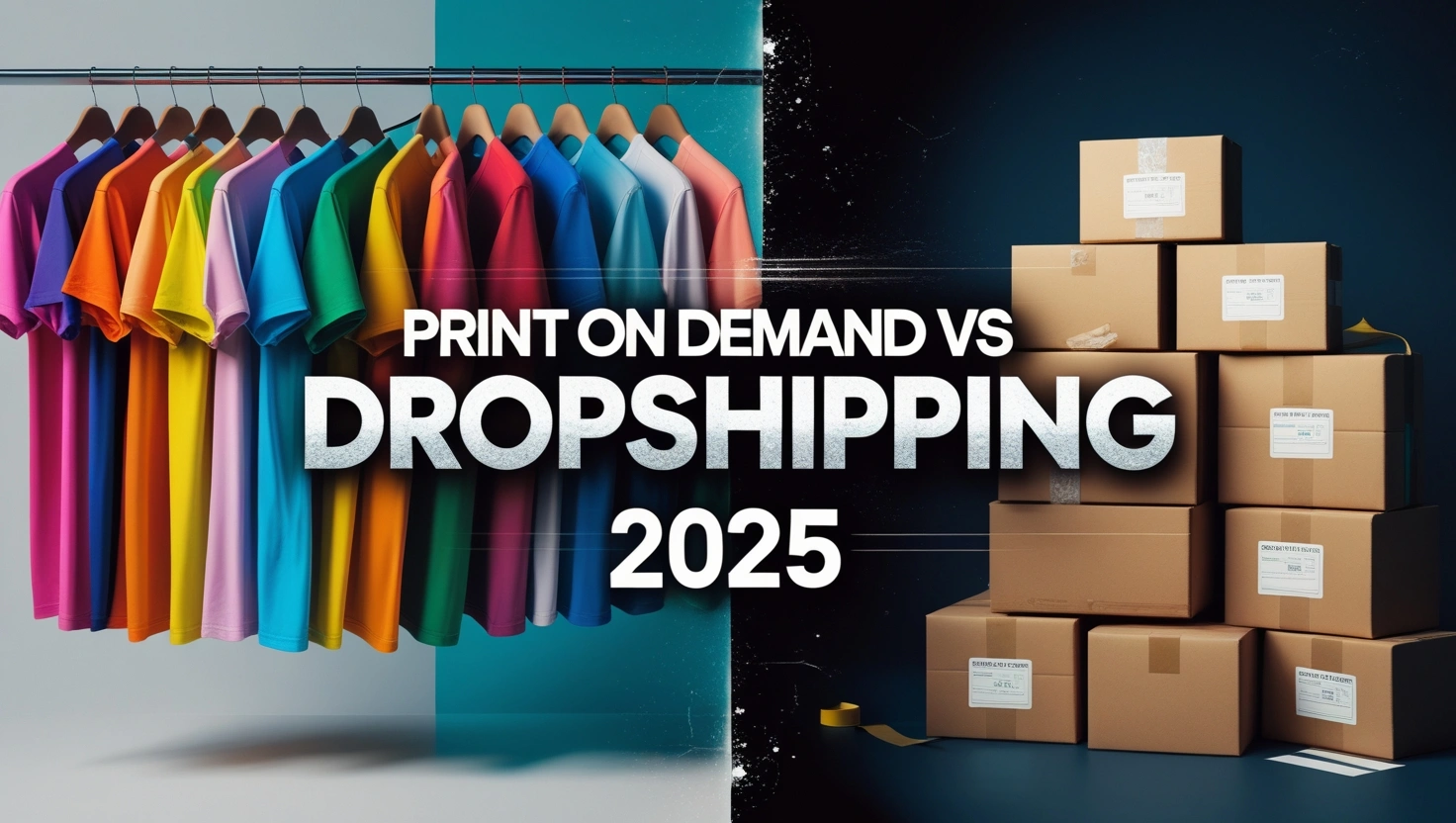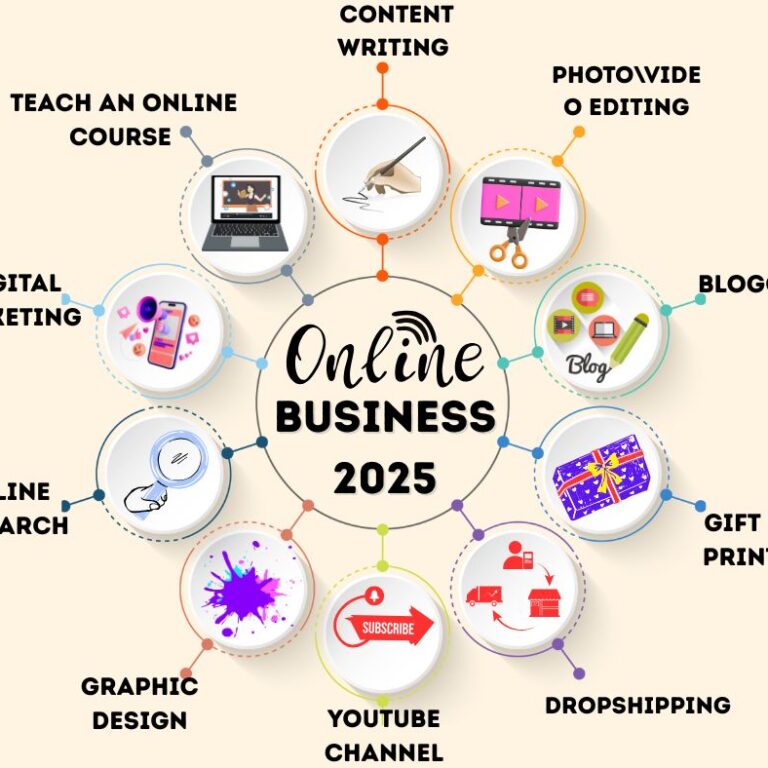A Comparison of Print on Demand vs. Dropshipping for 2025
Introduction
Evaluating Print on Demand vs Dropshipping 2025 is one of the most popular strategies for new entrepreneurs starting out in the internet business world. What are your thoughts regarding starting in e-commerce? Do you feel overwhelmed by the choices available? Many entrepreneurs have encountered this problem at least once. Print-on-demand and dropshipping are side-by-side choices for both new and seasoned entrepreneurs.
In this article, we’ll analyze in detail the trends, costs, and success stories of Print on Demand vs Dropshipping 2025.
Understanding User Needs
To start an online business, proper planning and selection of the model is a must. Most beginners look for low-risk, low-investment business opportunities that are scalable without inventory duties.
The Evidence
Market research indicates that e-commerce has advanced 38% over the past year. The [global dropshipping market]is projected to be valued at $557.9 billion in 2025, and print-on-demand also has a 12% yearly growth.
The Solution
Through this guide, we intend to provide a side-by-side analysis of print-on-demand and dropshipping, looking at numerous factors. Our goal is to help you figure out which model aligns with your business objectives, finances, and strategic foresight for 2025 and the years that follow.
What is Print on Demand (POD)?
This business model follows the “order first, create later” strategy. No printing is done until a customer makes a purchase.
The Process of POD
The first step is designing custom graphics for t-shirts, mugs, or posters. After a customer makes an order, your POD partner takes care of printing and shipment.
Prominent Providers of POD Services
Several trustworthy platforms dominate the POD industry. [Printful]has an extensive range of products as well as high-quality printing. [Printify]has multiple print providers, which allows them to have more competitive pricing
POD’s Product Variety
The market for POD keeps expanding beyond simple apparel. Now you can sell: – Custom clothing (t-shirts, hoodies, and leggings)
– Home décor items (blankets, pillows, and wall art)
– Accessories (bags, phone cases, and jewelry)
– Stationery supplies (notebooks, planners, and stickers)
The Definition of Dropshipping
Entrepreneurs can now sell items without worrying about the inventory, thanks to dropshipping. The supplier stores, packs, and ships the items directly to the customer.
The Dropshipping Process
You start by setting up an online store where you list products that suppliers sell. When a customer places an order, you buy the products from the suppliers who fulfill orders directly to the customer.
Suppliers Providing Dropshipping Services
It is still very important to find reliable suppliers. They are crucial for succeeding in the business. [AliExpress]allows customers to access millions of products, though the quality varies. [SaleHoo]provides verified supplier listings, which helps provide more consistent quality.
Product Scope in Dropshipping
The scope of items in dropshipping is virtually endless, ranging from
– Accessories and Electronics
– Fashion and Clothing
– Home and Gardening Goods
– Beauty and Cosmetic Aids
– Toys and Entertainment Products
Key Differences: POD vs. Dropshipping
Knowing the important differences helps you understand which model fits you better
Required Capital Outlay
Both models require less investment than traditional retail but still necessitate some investment.POD normally requires an investment of $100-500 for setting up a website and purchasing sample products. Dropshipping usually costs $100-1000 on a website, research tools for products, and membership to suppliers.
Comparison of Profit Margins
The range of profit differs largely between the two models. POD margins tend to stay around 20-30% after production costs, while dropshipping can range anywhere from 15-45%, depending on niche and relations with the supplier.
Managing Inventory
Neither model requires the tedious task of personal inventory management; however, their methods differ.POD: No inventory exists until commanded products must be created on demand. Instead, with dropshipping, suppliers keep an inventory set that you never see or touch.
Branding and Creative Control
Your capabilities in making distinctive products determine the value of the longevity of the venture.
Adjustments of Customization
POD provides customizations to a high level and applies original designs to certain pieces of merchandise. Each product can be not similar to your brand. Other than custom packaging and shipping inserts, dropshipping provides no other means of customization. You sell products created by different manufacturers.
Brand Recognition Potential
Achieving a brand takes a massive effort because you have to deliver the same level of quality and identity consistently. With print-on-demand services, clients have the opportunity to sell unique designs, which helps build stronger recognition for their brand. For dropshipping, the focus shifts to marketing and customer service to stand out.
Operational Details
Profits and the ability to grow are influenced by daily operations.
Costs and Times for Shipping
Delivery satisfaction is truly important for customer experience. With print-on-demand shipping for POD, it averages 3-7 days for domestic orders and internationally within 2-4 weeks. The costs also range from $3.99 to $15.99 depending on the size.For dropshipping, shipping usually takes 1-3 weeks from overseas suppliers. Costs vary widely based on the product and the source location as well.
Control of Product Quality
In order to achieve customer satisfaction, it is very important to maintain quality. For POD, most suppliers have set standards, and checking the quality can be done by ordering samples before selling.Managing quality control for POD is difficult. You are reliant on the ratings of your suppliers and the feedback from the customers.
Each Model’s Marketing Tactics
Focuses on driving traffic and conversions based on the business model in place, as appropriate marketing does not differentiate between the models.
Social Media Methods
Visual marketing sites, like Instagram and Pinterest, serve as a major source of business for POD drop shippers. The unique designs have a viral potential and create easy-to-share material. Using targeted ads through Facebook and Google, dropshippers showcase product features along with aggressive pricing and value-for-money advertising.
Collaboration with Influencers
POD brands can engage in partnerships with influencers by creating custom designs to suit their preferences.Influencers are commonly associated with affiliate programs and reviews in dropshipping businesses.
Starting a New Business POD
Strategies should encompass long-term business goals and their associated plans.
Challenges with Scalable POD Businesses
As a POD business grows, it faces challenges such as: – Keeping up with changing trends in designs – Meeting growing customer service needs – Synchronizing with various print providers to maintain optimal quality standards.
Opportunities for Scaling in Dropshipping
Opportunities for dropshipping expansion include: – Increasing product offerings without incurring new fixed costs. – Exploring new target audiences with low expenditures. – Adding more suppliers for enhanced service.
Compliance and Legal Matters
Legal requirements aid in improving efficiency by avoiding mistakes with dire financial repercussions.
Copyright Restriction with POD Compliance
POD companies risk litigation from designing licensed characters or logos without obtaining the proper permissions. This makes acquiring necessary copyrights critical
Safety Standards in Dropshipping Compliance
Entrepreneurs venturing into dropshipping hold the responsibility for ensuring the safety of the products offered. Items are required to comply with the destination country’s legislation and safety policies.
Detailed Studies and Achievements Examples
These offer strategic learnings applicable to both models.
Pod Examples of Achievements
[Gymshark]started as a print-on-demand business and has evolved into a global fitness brand. The company has managed to build a customer base through its innovative designs
Dropshipping Success Stories
The home furnishing industry was a pioneer in accepting dropshipping. Wayfair started dropshipping home goods, which have now become a household name. Since then, their focus on customer experience has ensured that they remain above the plethora of challenges that all drop shippers face.
Which Model is Appropriate for You?
Take these into consideration when you are faced with this decision.
Skills Ought to Be Examined
Your personal skill level has an impact; however, both models require different skills. Creatively inclined entrepreneurs with design skills will appreciate POD. Marketing-oriented individuals will favor working with dropshipping and excelling at product research.
Budget Constraints
Available funds affect overall capabilities from the start. A more controlled budget is better suited for PODs ($100-300), as they can ‘create’ the products. With dropshipping, more of an initial investment ($500-1000) seems to be assumed necessary.
Time Investment Accounted
The time available for any task impacts how well it gets done.Goal setting is reserving more time to complete tasks.POD does require more time for design creation but less for order processing. On the other hand, less creative time is needed for dropshipping, but more time is required for customer service and managing suppliers.
Hybrid Strategies for 2025
2025 is expected to see entrepreneurs easily switch between the two business models.
Advantage Mix POD Vision Alongside Drop Logistics
Alongside leveraging the best of both worlds, be sure to create a core brand centered around POD products while building out your selection through dropshipping.
Shift From One Model to Another
Test the market demand with dropshipping and then tailor the best-selling categories with POD-offered products. This will help save on the investment placed toward the initial design.
Future Trends for Both Models
Focus on possible industry changes to remain at the cutting edge
Technology Advancements
More intricate products and designs are made possible due to advancements in printing technology. The automation dropshipping tools powered by AI streamline inventory supervision, further enhancing operational efficiency
Market Predictions for 2025-2030
Innovative tools using augmented reality are expected to enhance the design experience of POD customization, merging with more streamlined customization. There is an anticipated global increase in fulfillment centers, leading to dropshipping having faster shipping times.
Conclusion
Both print demand and dropshipping stand as viable entrepreneurship options in the year 2025. POD has a perceived higher quality and offers branding, creative control, and unique marketing strategies. Dropshipping, on the contrary, has a wider selection of products and faster access to new trends, although it often has lower-quality materials and quality control problems, leading to lower profit margins. The correct option depends on each person’s skills, resources, and objectives. Most entrepreneurs eventually incorporate the benefits of both models into one strategy. No matter what you decide, the e-commerce market rewards those who adjust and prioritize the loyalty and satisfaction of their customers. Choosing between Print on Demand vs Dropshipping 2025 depends on your creativity, budget, and long-term vision
Frequently Asked Questions
Can I start both POD and dropshipping simultaneously?
It is possible, but starting with one model allows for easier learning and optimization focused on. Start with the model that leverages your strengths first.
How much money do I need to start a profitable POD or dropshipping business?
A functioning POD business could be started for as little as $200 by paying for the website and sample products. Dropshipping businesses usually need about $500-1000 for platform fees, marketing test expenses, and product research tools. With proper execution, both can yield profits within 3 to 6 months.
Do I need design skills for print on demand?
Design skills certainly aid in creating better products, though they are not required. Many successful POD entrepreneurs hire designers on [Fiverr]or create their designs with intuitive platforms like [Canva]However, having an understanding of basic design principles and market preferences is crucial.
How do I handle customer service for products I never see?
Create specific lines of communication for these issues and templates for automated responses to frequently posed questions. Whenever possible, procure product samples to understand what customers are receiving. Communicate policies regarding return and refund processes, taking into account what the supplier can realistically meet.
Which business model has a lower risk for beginners?
Print-on-demand typically poses a lower risk because you only create products after receiving payment. Dropshipping might involve more testing to identify products, which could lead to higher initial losses. Both models greatly minimize risk compared to traditional retail by eliminating the need to invest in inventory.Whether you’re a beginner or experienced, understanding Print on Demand vs Dropshipping 2025 is a must.







Turn your text into audio gold – because some people prefer to listen, not scroll! https://bit.ly/Easy-TTS